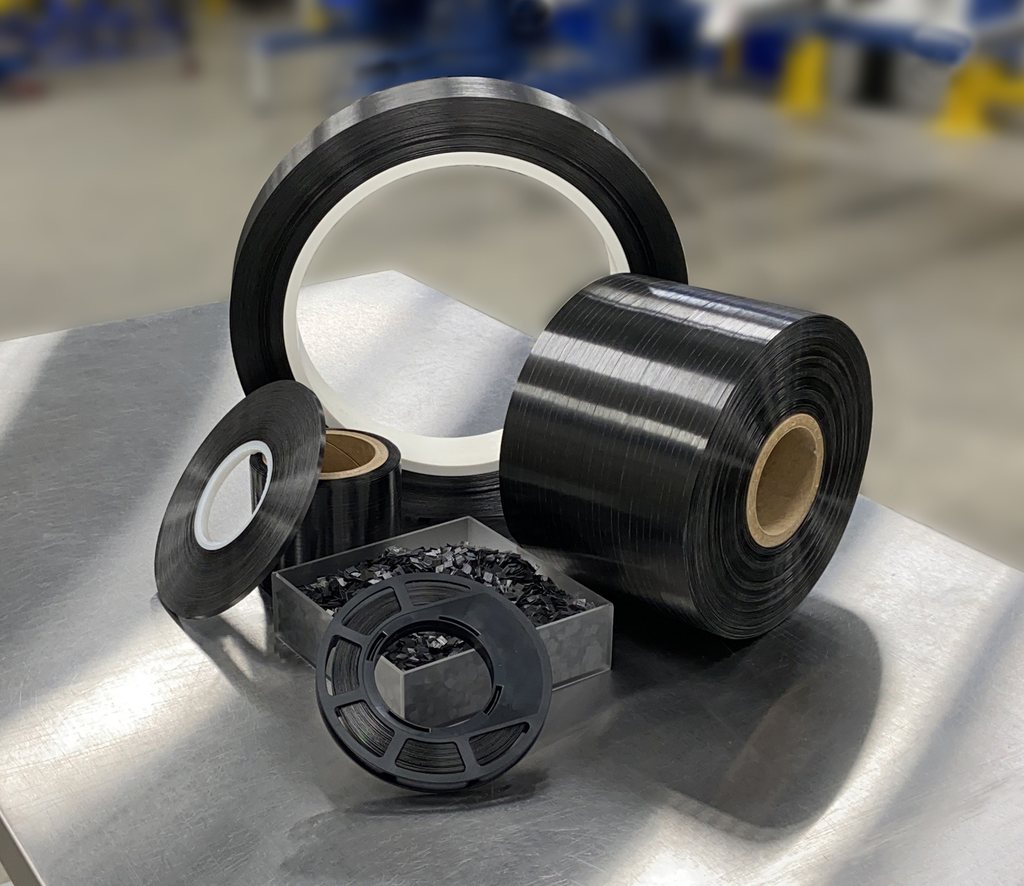Automation streamlines the process

Web Industries’ thermoplastic composite programme manager, Mark Richardson and global director of research and technology, aerospace Grand Hou, look at how composite materials formatters are turning to automation to meet the needs of next-generation aircraft.
Formatters of composite materials serving the aerospace industry have made significant strides in automation over the last two decades, but additional advancements will likely be necessary to keep pace with the next generation of commercial aircraft designs.

Composite materials formatters link materials-manufacturers with aerospace parts fabricators and OEMs. In this central role, they convert composite prepregs into forms, such as slit tape that can be efficiently fashioned into completed aerospace components.
Automation - the practice of operating or controlling an industrial process by mechanical or digital means - has significant benefits for formatters, including: Improving the quality and consistency of formatted materials; Reducing variances in materials and increasing process reliability; Simplifying the machine operator’s equipment management tasks.
Next-generation aircraft developments are already spurring demand for a greater diversity of composite materials and formats. This will inevitably pressure formatters to further automate their operations in the coming years. There will also be a need for more cooperation and integration among all partners in the aerospace supply chain.
Continuous improvements
Due to their combination of light weight and high strength, aerospace-grade composite materials offer the promise of ‘lightweighting’ new aircraft, cutting fuel consumption and reducing the aerospace carbon footprint. Among the most popular aerospace-grade composites are thermosets and thermoplastics, each of which can be combined with carbon, glass or other fibres to form prepreg systems.

Thermosets have a well-established supply chain and a long track record in aerospace applications. Thermoplastics, on the other hand, have only gained favour in recent years. First used in clips and brackets, they are now considered for structural applications, including wings and fuselages. In contrast to thermosets, thermoplastics have an unlimited shelf life prior to curing and do not require refrigeration. Also, some thermoplastic parts can be recycled. Additional thermoplastics advantages include out of autoclave in-situ consolidation and compatibility with ultrasonic welding rather than riveting for assembly.
As thermoset and thermoplastic materials became more prevalent in aerospace applications and OEMs assigned higher priority to their selection and use, many formatters developed expertise in a limited range of formats suitable for part fabrication. A notable example is slit tape. Here, prepreg materials are sliced into ribbons of tape, which are wound onto large spools in a pattern that fits the application. The pattern is selected based on the requirements of fabrication machinery. Narrow tape is intended for automated fibre placement (AFP) machines, wide tape for automated tape laying (ATL) systems.
Formatters continuously improved these operations over the years to boost reliability and product consistency. Increased automation, for example, resulted in enhanced slitting accuracy and better tension control during slitting, which is critical factor in maintaining overall width consistency, minimising material disruption and yielding consistent final package stability.
A speedier setup
Automation has also streamlined the process of machine setup and tuning, which on average takes eight hours to complete manually and directly impacts operational costs. In one example, a composite materials formatter’s 24-head slitting & spooling line initially took an entire operations shift to set up. Over a decade or more, the formatter implemented a series of mechanical upgrades that reduced machine setup time even as the line was fitted with additional spooling heads. Overall, setup time per spooling head was reduced by a factor of five or more.
Although automation makes a difference in formatting, much also depends on the skill and experience of machine operators. This is because composite materials are not homogeneous and vary somewhat from batch to batch. Skilled operators are necessary for formatting efficiency. They can spot differences in material quality and consistency and make adjustments to compensate for variations that could affect fabrication. Small adjustments can make a big difference in the final product.
New era of manufacturing
The current wave of innovation in aircraft design and development, along with the increased automation that supports it, reflects a broader trend often dubbed Industry 4.0, or the Fourth Industrial Revolution. Following in the wake of the Industrial Revolution’s first two phases and the ensuing Information Age, Industry 4.0 will be marked by increased automation of traditional manufacturing processes and advances in machine-to-machine connectivity and communication.

In line with this trend, the development of next-generation aircraft will create a more complex environment for composite materials formatters. Expect to see more experimentation and more demand for a greater diversity of solutions, such as: More types of composite materials; Different fibre and resin systems; New formats such as chopped flakes, biasply materials and extremely narrow tapes on small bobbins.
OEMs and parts manufacturers might ask formatters to process six or seven different formats instead of a basic format, such as slit tape. Instead of five material types, there might be as many as 30. New fabrication equipment and methods will also emerge that require flexibility on the formatter’s part.
To remain competitive, composite materials formatters will have to build on their existing infrastructure and take a step forward in automation and technology. Enhanced automation will help formatters cope with the growing complexity ahead while maintaining quality standards and achieving the same or even increased throughput. It can also support the work of their machine operators and technicians.
More integration overall
The new era will also foster greater connectivity and end-to-end integration among materials manufacturers, formatters, equipment makers, fabricators and aerospace OEMs. Currently, partners in aerospace programmes tend to operate as self-contained units, siloed in their respective areas. One partner completes its assigned task, then hands it off to the following link in the chain. The new era will demand more linkages among partners and a higher level of integration between partners from the earliest design stage.
A recent aerospace program demonstrated collaboration’s benefits. Web Industries worked closely with its supply partners to produce a wing structure made of thermoplastic composites. The partners collaborated to create a high-quality component and achieve their cost targets. Web precision processes reduced variances in the formatted material, and this allowed the parts fabricator to minimise downstream variances in its operation, improving overall productivity.
In addition to the smooth material flows between partners, data connectivity will be critical in meeting future challenges. Formatters and fabricators, for example, could benefit from batch and traceability data supplied by materials manufacturers. This information might be used to identify which prepreg batches are best suited for specific fabrication processes such as AFP, ATL or compression moulding. Data of this kind could be routed automatically between supply partners.
Composite formatters have made impressive gains in automation to support their aerospace partners. They will likely have to automate further, and coordinate more closely with supply partners, to meet future challenges.













